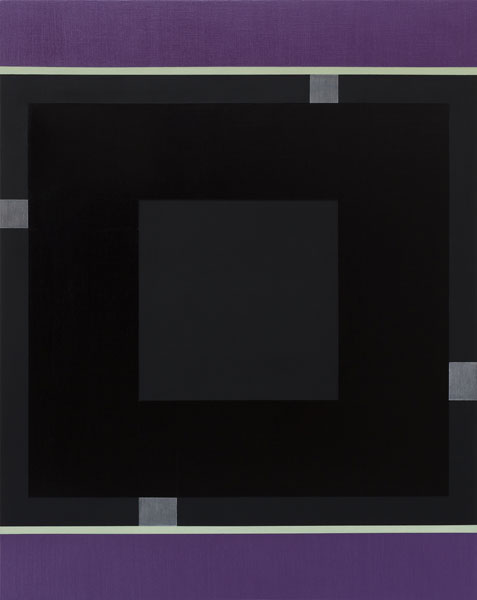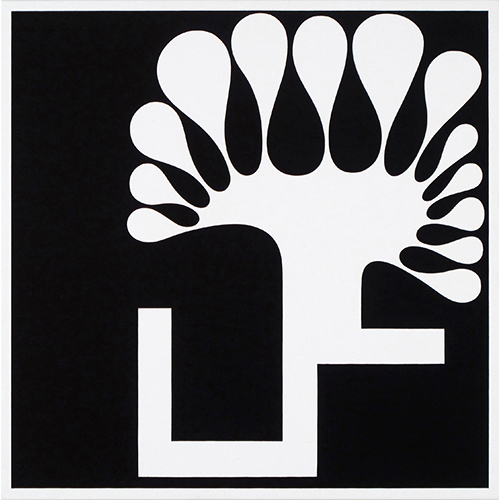
December 4, 2014

Don Voisine, Lake, 2014, oil on panel; 12 x 24"

Time Piece, 2014, oil on panel, 30 x 24"

Cary Smith, Splat #17 (black), 2014, oil on linen, 17 x 17"
Don Voisine and Cary Smith @ Gregory Lind
Had he been working in the ‘60s, the Brooklyn painter Don Voisine might have found himself included in the exhibition called “Post-Painterly Abstraction.” Clement Greenberg curated the show and coined the term to describe a group of mostly hard-edge abstractionists who he hoped would smash illusionism by crushing forms and volumes into the two-dimensional space of the picture plane. Out that event came Frank Stella’s famous statement, “What you see is what you see.” Voisine, while appearing to follow Stella’s dictum, cannily subverts it. Each of his taut geometric abstractions, however compressed or skewed, seems to be about elasticity and the opening up of concealed space.
In his previous show here in 2012, Voisine displayed those same proclivities by carefully placing solid colors into interlocking (and often irregular) shapes, and by paying particularly close attention to how the space around the edges of his small canvases could be used to define still other forms. He still does. What distinguishes the artist’s recent work is how, at key junctures, he pits matte textures against glossy areas to suggest dark, luminous pools of light. It’s astonishingly simple, this juxtaposition, but it does many things all at once. Most notably it serves to underscore and intensify the already dichotomous relations between the central forms and those that populate the edges.
The knockout works in this series, Noir, Timepiece and Contact, resemble darkened proscenia. There’s light emanating from behind the “curtains,” but it’s visible only from certain angles, which means you must scuttle from side to side to glimpse it. Consequently, what appear to be exercises in minimalist austerity turn out to be rich optical feasts. That quality places Voisine a lot closer to the Light and Space movement than to Constructivism, Minimalism, Finish Fetish, Neo Geo or any genre or sub-genre Greenberg championed: proof of how a historical style can be endlessly refashioned.
Cary Smith with whom Voisine is partnered is a Connecticut painter whose abstract works run in two directions: geometric and biomorphic. Here, the former dominate, and that’s our loss because his elegant curvaceous forms, reminiscent of Matisse and Arp, are his strong suit, and in this exhibit only one example, Splat # 17 (black), is on view, tucked away in a far corner. As with similar works shown this year at The Aldrich Contemporary Art Museum, this one fuses bulbous shapes with muscular girders. It pushes nonobjectivity to the best possible place, that being the place where abstraction bypasses real-world referents. By contrast, his color-rich grid paintings – small squares on solid backgrounds — seem formal, matter-of-fact. They demonstrate that what we see is sometimes all we see. While the logic of pairing Voisine and Smith is obvious, showing the contrasts between their respective approaches would have made for a stronger show. As is, Voisine easily carries it.